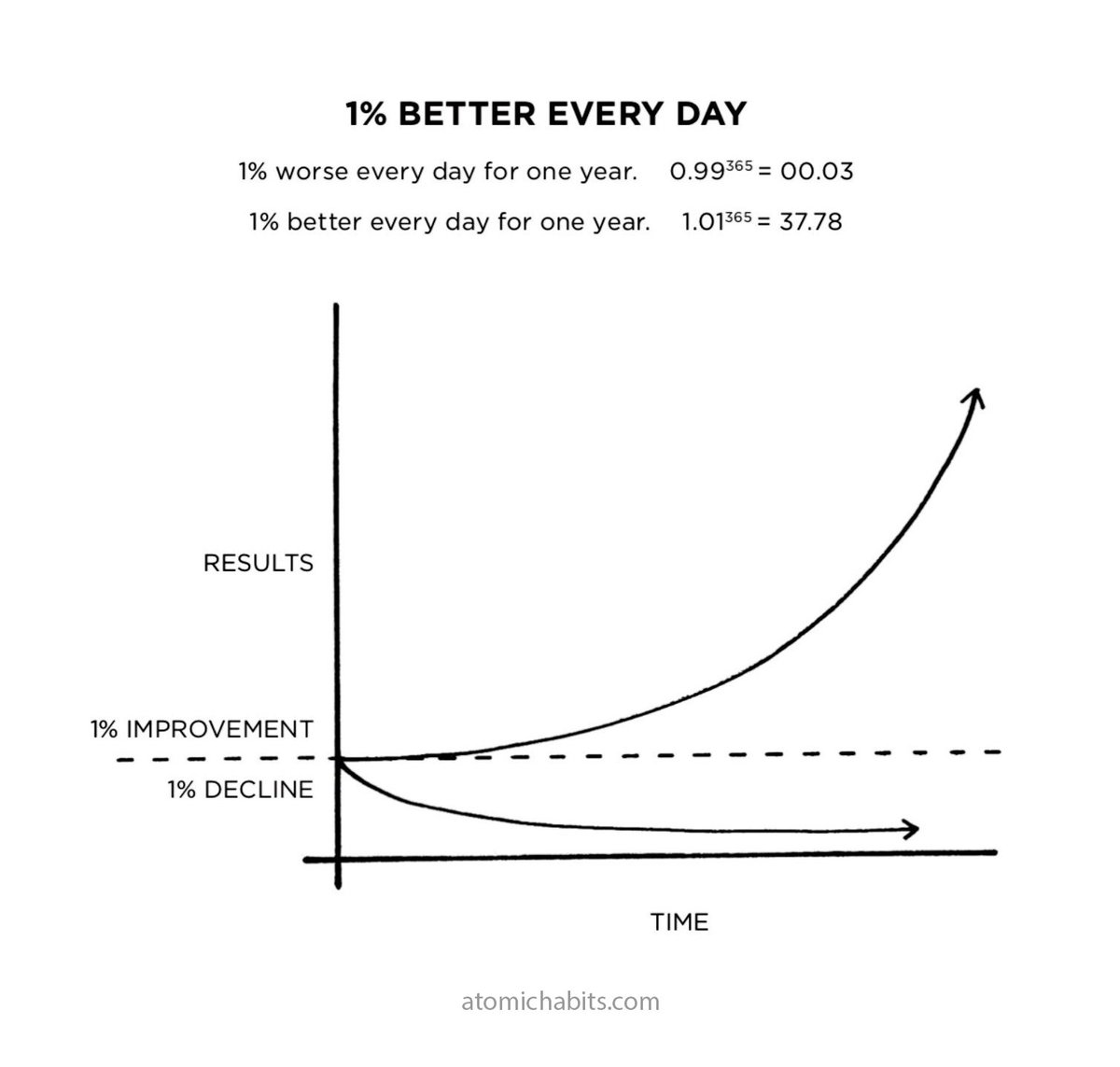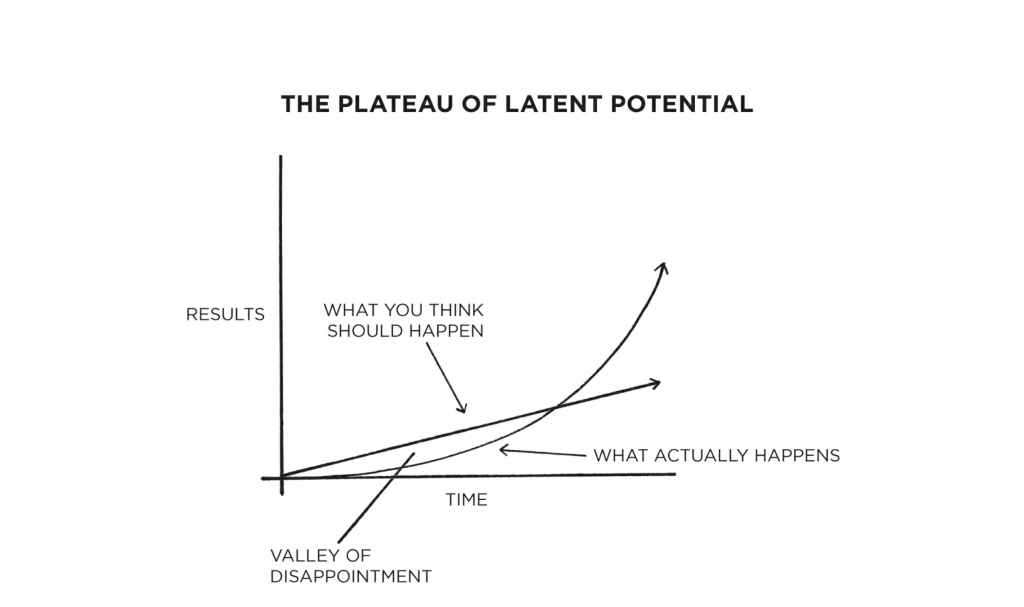Atomic Habits - Takeaways9 min read
9 min read

Share This Article on Social Media
I have recently read the book “Atomic Habits: An easy & proven way to build good habits & break bad ones” by James Clear. With over 2 million copies sold and as a #1 New York Times Bestseller, I knew I needed to hop on board and read this book.
After I started reading, I was actually quite impressed by how easily understandable the author breaks down the main points.
As someone who is always looking for ways to improve myself, this book brought a lot of value in a very easily digestible way.
Here are the main takeaways I got from “Atomic Habits” so that you can either take the main points of it and move on or get inspired to read it yourself!
The main idea of James Clear
James’ main blueprint can be summarised by the following:
To build a good habit, you need to:
- Make it obvious
- Make it attractive
- Make it easy
- Make it satisfying
To break a bad habit, you need to:
- Make it invisible
- Make it unattractive
- Make it difficult
- Make it unsatisfying
How to build a Good Habit
The first takeaway I got from this book is the sentence “many people think they lack motivation, when what they really lack is clarity”. So often we try to start a new habit by vaguely describing it. “I want to eat healthier.” “I want to work out more”. “I want to start meditating.”
These types of resolutions barely ever work, as there is nothing tangible about them. Our brain needs clarity in order to stick to something. For example: “I will eat vegetables with every meal.” or “I will go to the gym every Monday, Wednesday, and Friday after work.” or “I will meditate for 5 minutes before pouring my coffee each morning.”
This way we have tangible goals that are easier to stick to because they are more specific.
Make it obvious
Visual cues are the greatest catalyst of our behavior. In order to start a new habit, make the visual cues of it obvious in your environment! For example, to eat more fruit, display your apples and oranges in a bowl on the kitchen counter instead of in a drawer in the fridge!
Another thing to keep in mind is that it is easier to build a new habit in a new environment. Of course, most of us won’t move just to build a new habit, but you can start by reassigning purpose to different areas in your home.
An important thing to remember is to try and assign a single use to one place. Not only will this be a visual cue for habits, but it will also help your mental health. For example, don’t work in the bedroom. If possible, don’t even watch TV in the bedroom, just use it to sleep!
Make it attractive
To stick to a good habit, another one of James’ tips is to make it attractive. A great way to do that is by using temptation building. This means you link your Need with your Want. For example, you will only watch Netflix (Want) while being on the stationary bike (Need).
This will make it a lot more tempting to follow through with your habits.
Another thing to keep in mind is that our culture determines which habits are attractive to us. Generally, we tend to imitate the habits of the close (friends, family), the many (society), and the powerful (celebrities, etc).
To make your habit more attractive, try and join a culture where your desired behavior is the norm. An easy example would be to join a sports class or a gym. This way, you will surround yourself with people who live your goals each and every day.
Another way to make a habit attractive is to create a motivation ritual. This means you will do something you enjoy right before a difficult habit. For example, have your coffee in the morning right before you meditate. This will give you the necessary push to follow through with your habit!
Make it easy
The easier a habit, the more likely you are to stick with it. A sentence in James’ book is “the most effective form of learning is practice, not planning”. What this means is essentially, take action!
Yes, it is important to be clear about what you will do and when you will do it, but some people get stuck in the planning stage. They spend weeks curating the perfect diet plan but never get around to actually cooking with more vegetables, for example, because they are stuck trying to create a perfect plan.
Another important idea in Atomic Habits is that the amount of time is not as important as the number of times you repeat something to achieve automaticity (which is essentially what a habit is).
For that reason, James created the 2-minute rule: Only do your habit for 2 minutes a day at first to shape your identity. Meditate for only 2 minutes. Walk for 2 minutes. Read for 2 minutes. These things are obviously not what your end goal with a habit is, but by starting with 2 minutes a day, you get your brain used to this new identity. All of a sudden you are a person who meditates, who walks, or who reads every day, even if it is just for 2 minutes. Once this identity is established, you can increase the time you spend on the habit.
Here you can see what effect a tiny change for the better in your life can have over time:

Make it satisfying
Last but not least, to form a new habit, you should make it satisfying until it is automated. You can do this by using small positive reinforcements (for example, every time you went to the gym you get to watch your favorite show on Netflix that evening).
Habit tracking is another effective way to make an activity satisfying, the visual cue of crossing something off is insanely motivating for us.
Habit Trackers are also a great way to track evidence of progress, but remember to focus on so-called “non-scale victories” when measuring your progress. This means, for example, if you are trying to lose weight, don’t focus on the number of the scale, as that number can plateau, and so will your motivation. Instead focus on how much stronger you’re getting, how much more energy you have during the day, and how you feel better in your clothes. This concept of “non-scale victories” can be applied to anything, by the way, not just weight loss.

How to break a bad habit
In order to break a bad habit, you simply inverse the rules we just talked about for building a good habit.
Make it invisible
Out of sight, out of mind. This very much applies to bad habits. The less temptation you have around you, the easier it will be to avoid something.
A super interesting point in the book was that people tend to have the exact same amount of self-control, whether they are successful or not. The only difference is that people with “high self-control” spend less time in tempting situations.
It is easier to avoid something than to resist it!
Self-control is a short-term solution. Anybody will lose motivation eventually, so making something invisible increases your chances of breaking the habit.
Make it unattractive
To break a bad habit, try to make it as unattractive to you as possible. Associate your bad habits with negative feelings and your good habits with positive feelings.
For example, if you have a habit of biting your nails and the urge hits you, think about how much you want to break that habit because it makes you feel self-conscious when you are out and about and comparing your nails to your friends’ nails.
Make it difficult
Change your life by creating an environment with little friction for good habits and more friction for bad ones.
Don’t keep unhealthy snacks around the house, but instead fresh fruit and veggies, for example. This way, when you feel like snacking, it would be a lot more difficult to go to the store and buy snacks than to eat what is already available to you!
Make it unsatisfying
Lastly, make bad habits unsatisfying. A good way to do that might be having an accountability partner who will check in with you on how things are going.
Another idea mentioned in the book was habit contracts. Setting up a contract with either yourself or someone else, where each time you do a bad habit, something unwanted will be the consequence (like paying $5).
Conclusion
This was definitely an amazing book to read. The key takeaways touch on all the valuable info that can be found in “Atomic Habits”, but for me, just reading the book also offered a great source of motivation to work on building good habits.
If you are looking for a book that will teach you very in-depth about habits, “Atomic Habits” is a book I can wholeheartedly recommend.
And if you don’t feel like reading the book, simply following these key steps should already help you massively in changing the way you approach habit building (and breaking).
I hope this post gave you some interesting food for thought! Let me know what you think!




